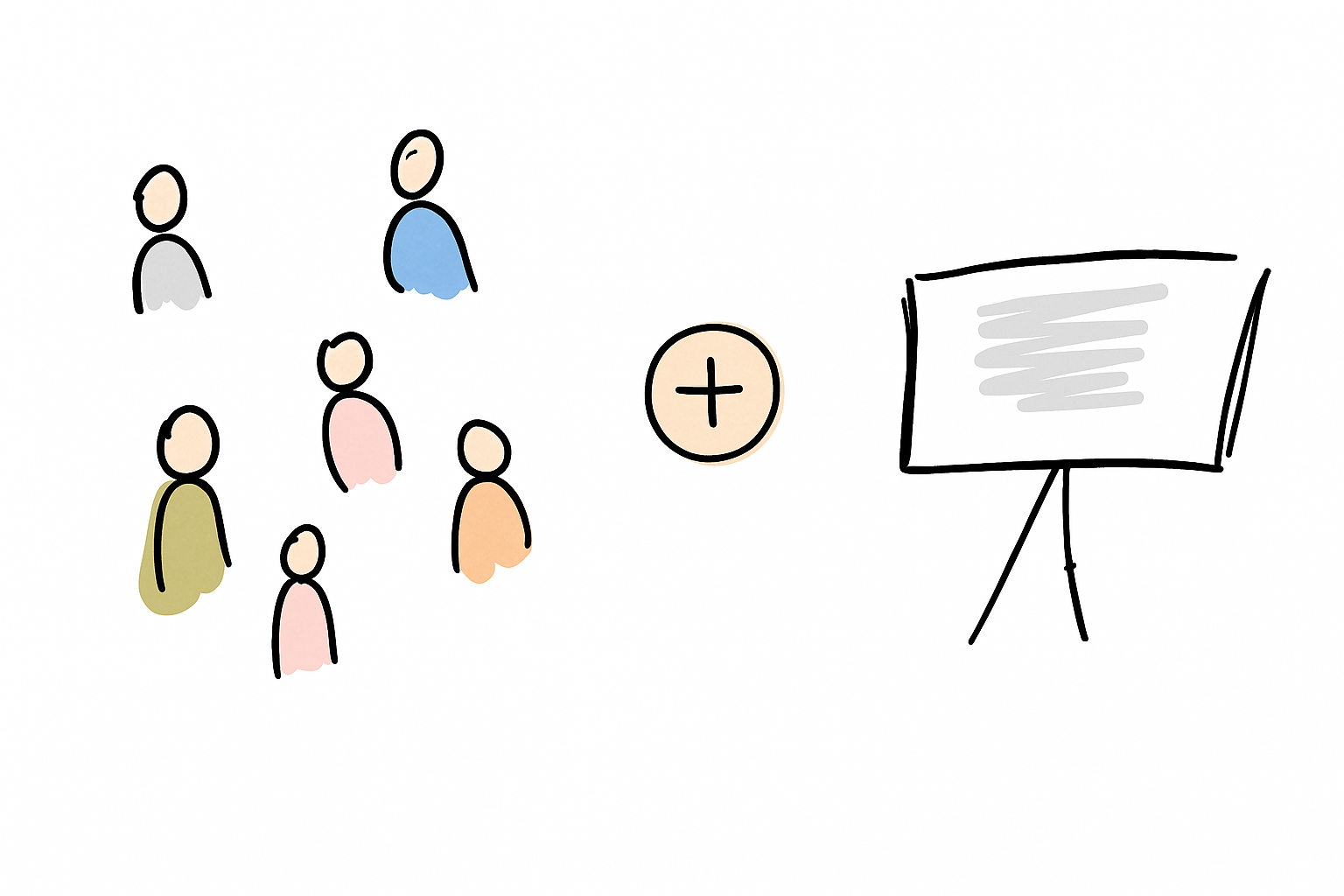Why Start With an Assumption-Based Diagram?
Before you’ve conducted any formal research, you already have something: assumptions. And these assumptions are valuable — if made visible.
Creating a first-draft experience diagram gives your team a common place to start. It helps uncover gaps in understanding, highlight contradictions, and generate focused research questions. Even though it’s not validated, it’s a critical tool for initiating alignment and shaping your exploration.
Think of it not as a finished product, but as a hypothesis in visual form — a sketch of how you believe a process or journey unfolds.
What Is an Assumption-Based Map?
An assumption-based map (sometimes called a hypothesis map or first sketch) is a working model of how you think things work. It’s based on the internal team’s perspective and helps frame the unknowns.
Your draft might include:
- Customer journey steps
- Roles and responsibilities
- Systems and channels in use
- Known pain points or “moments of truth”
The key is this: it’s not accurate — yet. But it is useful. It offers structure for future interviews and field research, guiding the way to truth.
Hypothesis vs. Reality: Know the Difference!
Before diving into research, most teams begin with assumptions — and that’s perfectly fine. What matters is making these assumptions visible and testable. A hypothesis map helps you organize your current thinking and recognize where confirmation is still needed.
The table below highlights the key differences between mapping what you think is happening and what actually is happening. Both approaches are valuable — as long as you’re clear on which one you’re using, and why.
| Hypothesis Mapping | Validated Experience Mapping |
|---|---|
| Based on internal beliefs | Based on real user data and observation |
| Created collaboratively in workshops | Informed by interviews and fieldwork |
| Useful to surface gaps | Useful to confirm patterns |
| Flexible and fast to build | Slower but richer in insight |
Your assumption-based map is not a deliverable — it’s a discussion tool. But it sets the stage for everything that comes after.
How to Create One: The Assumption Mapping Workshop

Bring together a small cross-functional group (4–7 people) and give them the space to think out loud together.
Materials:
- A whiteboard or virtual board (e.g., Miro, MURAL)
- Sticky notes or printable templates
- Markers, timer, smartphone or camera for documentation
Steps:

Frame the Scenario Choose a real-life situation, like “A customer places an order and calls with a problem.” Focus on that slice of experience.
Collaboratively Map the Flow Ask: what typically happens, step by step? Who is involved? What tools are used? Where are the challenges?
Capture Uncertainties Don’t be afraid of guesses. Mark unclear steps or assumptions with a “?” or a “To validate” tag. This is where your future research starts.
Document Early Ideas and Insights Often, stakeholders will want to propose solutions. That’s okay — just capture those ideas in a “Solution Parking Lot” to revisit later.
Summarize Knowledge Gaps By the end, you’ll have a set of open questions and “known unknowns.” That’s your research backlog.
Use Templates to Guide Thinking

If your team is new to journey mapping, use low-fidelity templates to provide structure:
- Linear Journey Grid – useful for processes like onboarding or support
- Swimlane Map – to track multiple roles across phases
- Emotion Curves – to capture perceived highs and lows
 Templates help people focus on content instead of layout — and they reduce “blank canvas” anxiety.
Templates help people focus on content instead of layout — and they reduce “blank canvas” anxiety.Please remember: Every validated diagram begins as a rough sketch! Here’s how the thinking evolves: Even if your draft is “wrong,” it’s a useful wrong — because it exposes what needs to be learned.
Final Thoughts: Draw to Learn, Not to Prove
Too many teams wait for perfect data before visualizing experience. But in CX work, drawing is thinking. A messy first diagram invites participation, reveals blind spots, and generates momentum.
Start early. Stay collaborative. Let your diagrams evolve with evidence.
“The best experience maps begin as conversations — not conclusions.”
Need a visual? Try sketching the “Assumption to Insight” journey as a simple arrowed flow or build it together in your next team session.